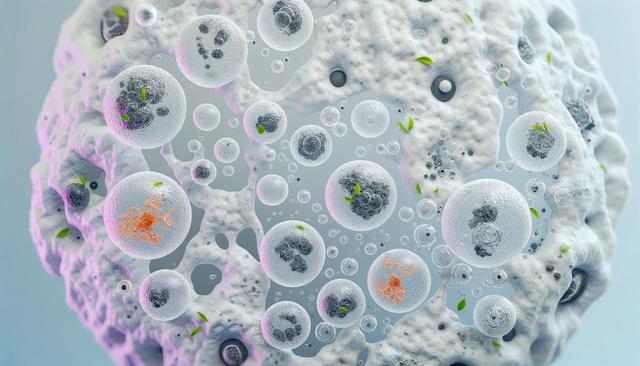Recognizing and Managing Epidermolysis Bullosa: A Practical Guide for Patients and Caregivers
Living with epidermolysis bullosa (EB) presents unique challenges, especially when early symptoms like fragile skin and frequent blistering start to appear. This guide offers a clear, supportive overview of how to recognize key signs of EB and navigate practical strategies for daily care and comfort.

Understanding Epidermolysis Bullosa and Its Early Signs
Epidermolysis bullosa (EB) is a group of rare genetic disorders that affect the skin’s ability to tolerate friction and trauma, resulting in blistering and skin damage. One of the most telling early signs is the presence of unusually delicate or fragile skin that blisters easily, even from minor friction or pressure. These symptoms can appear shortly after birth or emerge later in childhood, depending on the specific type of EB. Recognizing these initial indicators is essential for timely diagnosis and care planning.
In cases of EB, the proteins that help bind skin layers are either missing or function improperly, often due to mutations in specific genes. For example, recessive dystrophic EB is linked to mutations in the Col7a1 gene, which plays a crucial role in forming collagen type VII. This protein is necessary for anchoring the skin layers together. When it’s absent or defective, the skin becomes highly vulnerable to injury. Understanding these genetic underpinnings can help families and caregivers grasp the nature of the condition and advocate effectively for appropriate care and support.
Daily Management and Protective Techniques
Managing epidermolysis requires a proactive approach to minimize skin damage and ensure comfort. Since people with EB often live with fragile skin conditions, every aspect of daily life needs to be adapted to reduce friction and pressure. Clothing choices, bathing routines, and even methods of lifting or holding a child can have a significant impact on skin integrity.
Key strategies for daily management include:
- Using soft, seamless clothing made from natural fibers
- Padding frequently affected areas such as elbows and knees
- Creating a gentle bathing routine with lukewarm water and mild cleansers
- Maintaining optimal room temperatures to prevent sweating and subsequent irritation
Wound care is another essential component. For those dealing with EB or similar fragile skin conditions, techniques used in wound care for elderly thin skin can be beneficial. This includes non-adhesive dressings, frequent monitoring for infection, and moisturizing to prevent further cracking. Working closely with dermatologists and wound care specialists ensures that wounds are treated safely and effectively.
Support for Caregivers and Families
The emotional and physical toll of EB extends beyond the individual and deeply affects caregivers and families. Navigating the condition often involves frequent medical visits, wound care routines, and emotional distress. Establishing or joining EB support networks can provide essential relief and shared knowledge among families facing similar challenges.
These networks offer practical benefits, such as:
- Peer-to-peer advice on daily care routines
- Access to local and global resources
- Emotional support through forums and group meetings
- Updates on clinical trials and emerging therapies
Caregivers can also benefit from guidance on managing stress, building a support team, and advocating for their loved one in educational and healthcare settings. Counseling and mental health support should be considered essential parts of comprehensive EB care, both for the patient and their family members.
Advancements in Research and Clinical Care
While there is currently no cure for EB, ongoing research offers hope for improved treatment options. One of the most promising developments involves Col7a1 gene therapy, which aims to correct the underlying genetic defect responsible for some forms of EB. This approach has shown encouraging results in early trials, where it has helped restore collagen production and improve skin resilience in affected individuals.
Other advancements include protein replacement therapies, stem cell-based treatments, and improved wound care technologies. These innovations aim not only to treat symptoms but also to address the root causes of skin fragility. Clinical care teams are increasingly adopting multidisciplinary approaches that involve dermatologists, geneticists, nutritionists, and wound care specialists to deliver comprehensive and personalized care plans.
For families seeking cutting-edge treatments, staying informed through EB support networks and trusted medical sources is crucial. Participation in clinical trials may also be an option, although it requires careful consideration and consultation with healthcare providers.
Promoting Comfort and Quality of Life
Beyond medical care, quality of life is a central focus for individuals living with EB. Ensuring comfort, mobility, and social inclusion are key goals that can be achieved through thoughtful adaptations at home, school, and in public spaces. Assistive devices, such as cushioned wheelchairs or specialized footwear, can help reduce pressure and prevent injury.
Nutrition also plays a vital role in managing epidermolysis. A balanced diet supports wound healing and overall health, while special attention to calorie intake may be necessary due to increased metabolic demands from chronic wound care. Speech and occupational therapy can assist children with EB in developing essential life skills that promote independence.
Promoting emotional well-being is equally important. Encouraging participation in hobbies, providing opportunities for social interaction, and fostering a sense of normalcy can significantly improve mental health outcomes. Education for peers and caregivers about the condition also helps create a more inclusive and understanding environment.
Conclusion: Building a Supportive and Informed Care Environment
Living with epidermolysis bullosa requires ongoing adaptation, education, and support. Recognizing the signs early, implementing effective daily care strategies, and staying informed about emerging treatments like Col7a1 gene therapy all contribute to a more manageable experience. For caregivers and patients alike, leaning on EB support networks and accessing specialized wound care for elderly thin skin techniques can make a meaningful difference. By fostering a compassionate, well-informed environment, families can enhance both safety and quality of life for those affected by this rare but impactful condition.